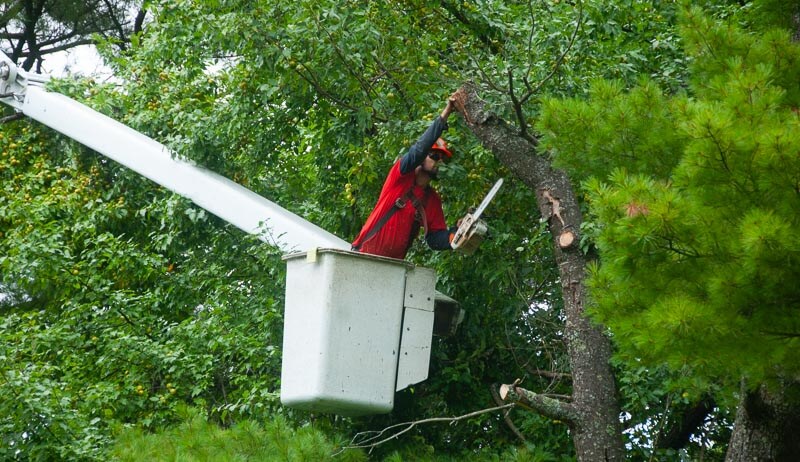
Trees are a beautiful addition to any property, providing shade, aesthetic appeal, and a sense of connection with nature. However, there may come a time when you need to remove a tree due to disease, safety concerns, or landscaping changes. While some tree removal tasks are manageable as DIY projects, it’s essential to understand when it’s best to hire a professional such as those with Al Miley Tree Care. In this article, we’ll explore some DIY tree removal tips, including the crucial decision of when to call in an expert.
Assess the Situation
Before grabbing your tools and diving into tree removal, take a step back and assess the situation. Determine the tree’s size, its proximity to structures or power lines, and the presence of any obstacles. If the tree is small, well away from potential hazards, and you have experience handling chainsaws and other tools, it may be a suitable DIY project.
Safety First
Safety should always be your top priority when attempting DIY tree removal. Wear appropriate safety gear, including a hard hat, safety glasses, gloves, and steel-toed boots. Additionally, make sure to read and follow the manufacturer’s instructions for your tools and equipment.
Plan Your Approach
Start planning by determining the direction in which you want the tree to fall. This should be the natural lean of the tree, if possible, to minimize the risk of it falling in an unintended direction. Clear the area around the tree and establish a designated drop zone.
Prune the Tree
Before felling the tree, prune any dead or weak branches. This will make the tree safer to work with and prevent them from falling unexpectedly during the removal process.
Use the Right Tools
Having the right tools for the job is crucial to a successful DIY tree removal. A chainsaw is a primary tool for cutting through the trunk, but a handsaw or pole saw may also be necessary for smaller branches. Ensure that your tools are in good working condition and sharp.
Felling the Tree
Felling a tree requires careful planning and precision. Make a horizontal cut (known as a notch cut) on the side of the tree facing your intended drop zone. This cut should be about one-third of the way through the trunk and should have a 70-degree angle. On the opposite side of the tree, make a horizontal cut slightly above the bottom of the notch cut. This will create a hinge that guides the tree’s fall. As you make the second cut, be prepared to move quickly to ensure your safety.
When to Hire an Expert
While DIY tree removal can be a rewarding project, there are situations when it’s best to leave it to the professionals:
Large or Taller Trees: Trees that are particularly large or tall pose a significant risk during removal. Experts have the equipment and experience to safely handle these situations.
Proximity to Structures: If a tree is close to your home, garage, or power lines, the risk of property damage or injury is high. Professionals can carefully control the tree’s fall.
Diseased or Infested Trees: Trees with diseases or infestations may require specialized treatment or disposal to prevent the spread of pests or pathogens.
Lack of Experience: If you don’t have experience with chainsaws, tree felling, or safety procedures, it’s safer to hire an expert to avoid accidents.
Legal Requirements: Some areas have regulations that require a permit or professional arborist for tree removal, especially for certain tree species or in protected environments.
Conclusion
DIY tree removal can be a manageable project if you have the necessary skills, tools, and the right tree for the job. However, it’s crucial to prioritize safety and assess the situation carefully. When in doubt, it’s wise to consult with a professional arborist or tree removal service to ensure a safe and efficient removal process.
Emily Hawthorne
Related posts
Stay connected
Today's pick
- Safety Essentials Every CNC Operator Should Follow DailyCNC machining demands precision, consistency, and discipline—but above all, it requires strict attention to safety. Whether you’re working with mills, lathes, routers, or grinders, every machine has the potential to cause serious injury if mishandled. That’s why CNC operators must follow safety protocols daily, no... The post Safety Essentials Every CNC Operator Should Follow Daily […]
